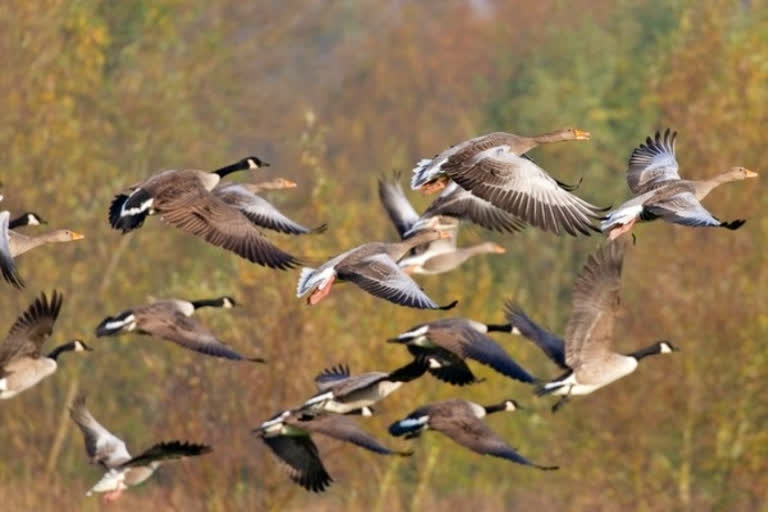Ranchi: As the temperature is going down in Jharkhand, the chirping of migratory birds has started filling the atmosphere in and around two dozen odd waterbodies of the state, that host the winged guests from countries with colder climates. Bird watchers are now flocking dams and lakes where species such as red-headed pochard, tufted duck and white-browed bulbul have reached.
They come to places like Jharkhand in search of food and to protect themselves from extreme cold in Central Asia, the Himalayan Region, Mongolia and Tibetan plateau, Satya Prakash, Jharkhand coordinator of Indian Bird Conservation Network (IBCN), told PTI. Migratory birds make Topchanchi Lake, Tilliya and Maithan Dams (all in Dhanbad), Kanke and Rukka Dams (Ranchi), Dimna Lake (Jamshedpur), Baska Dam (Chatra) Udhwa Lake Bird Sanctuary (Sahibganj) and other waterbodies of the state their temporary home during the winter.
Prakash, who is also the state coordinator of the Asian Waterbird Census (AWC), said, The birds find the weather condition suitable for their survival in Jharkhand, as the temperature is conducive for them, he said. Presently, Jharkhand's minimum temperature is hovering between 10 degrees Celsius and 13 degrees C, while the maximum is between 26 degrees C and 29 degrees C, according to Ranchi Meteorological Centre.
Founder of Birdsbuddy, a group of bird lovers, Shiv Shankar Goswami, said that they have found common pochard, red-headed pochard, tufted duck, bar-headed goose, greylag goose, great crested grebe, white-fronted goose, redstart, Himalayan Griffon in Hazaribag's Chadwa dam and Ranchi's Dhurwa dam. We also found white-browed bulbul in Topchanchi Lake. Scally-breasted thrush and Tickell's thrush were seen in Canary Hill of Hazaribagh, Goswami said.
Around 25,000 to 30,000 migratory birds visit the water bodies of the state every year, experts said. Some people kill migratory birds for their meat and forest department officials were asked to keep an eye on the activities in water bodies. Van Suraksha Samiti (Forest protection committee) plays a crucial role in monitoring activities in water bodies. They have also been asked to inform forest officials immediately if they find any suspected activity, Ranchi DFO (wildlife) Umesh Sahni told PTI.
The winged visitors generally reach Jharkhand in October and November and stay till March. Some birders claimed that the birds were late in arriving this year. Ajinkya Bankar, an avid birder and the DFO of Jamtara, said, "Migratory birds face food scarcity due to extreme cold and snow in their original place. Sometimes, a delay of a few days is seen because they find sufficient food on the way. So, they stay there for a few days."
Banker, who has identified 146 birds including migratory ones in his division and compiled their names in Santhali language for spreading awareness, said that the arrival of migratory birds in his forest division was almost on time. In Jharkhand, the Asian Waterbird Census (AWC) begins its bird headcount in January.
Prakash said that in a recent AWC meeting, it was decided to conduct the census in association with Jharkhand Biodiversity Board. However, a senior forest official said that the matter has not yet been finalised. (PTI)



